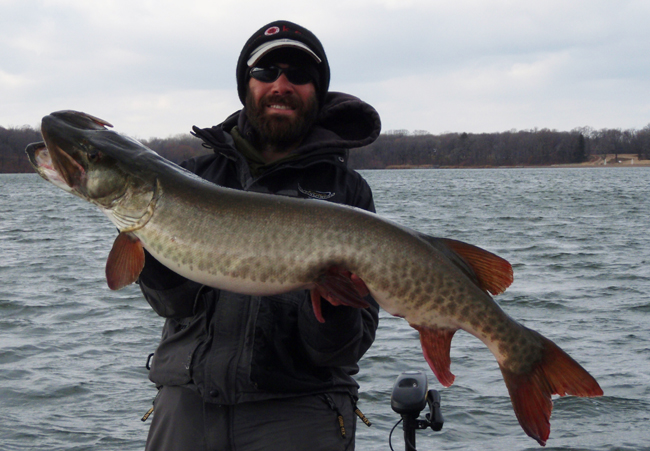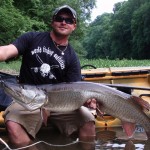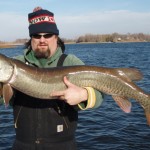By: Adam M. Glickman
Years of live bait fishing for muskies has led me to one of the few truths in all of musky fishing: Muskies are genetically predetermined to love white suckers. The response of muskies towards white suckers is uncanny. That includes muskies that are extremely pressured or perhaps have seen very few if any white suckers. Of course, the use of live suckers is not a cure all nor does it work all the time. However, those who have seen a sucker bite come “on”, know exactly what I refer to. All it takes is a multiple big fish day when nothing else will take a sniff or one of those days when you cant keep a sucker alive in the water and a half dozen are spent up in 45 minutes. The use of suckers for muskies has a rich heritage and a bright future, but new regulations in Wisconsin and Minnesota mean that special rigging considerations are a must for legal usage.
History
Once upon a time at the dawn of modern angling; rods, reels, and artificial lures were still rare luxuries beyond the means of most fishermen. Long bamboo poles coupled with crude line, hooks, and weights were much more the norm for all species, muskies included. During this transitional period, non native anglers first began to explore North American waters only to discover that some of them had a mysterious fish never seen before to people of European descent…. The muskellunge.
Of course, the plain hooks of these anglers needed something. The answer to that was as simple as it had been for millennia, live bait. I have seen 2000 year old artifacts recovered from the buried city of Pompeii. Such artifacts include items that are unmistakably fishing hooks fashioned from stone or bone, and I would bet my life that such hooks were baited with some type of natural and/or live bait.
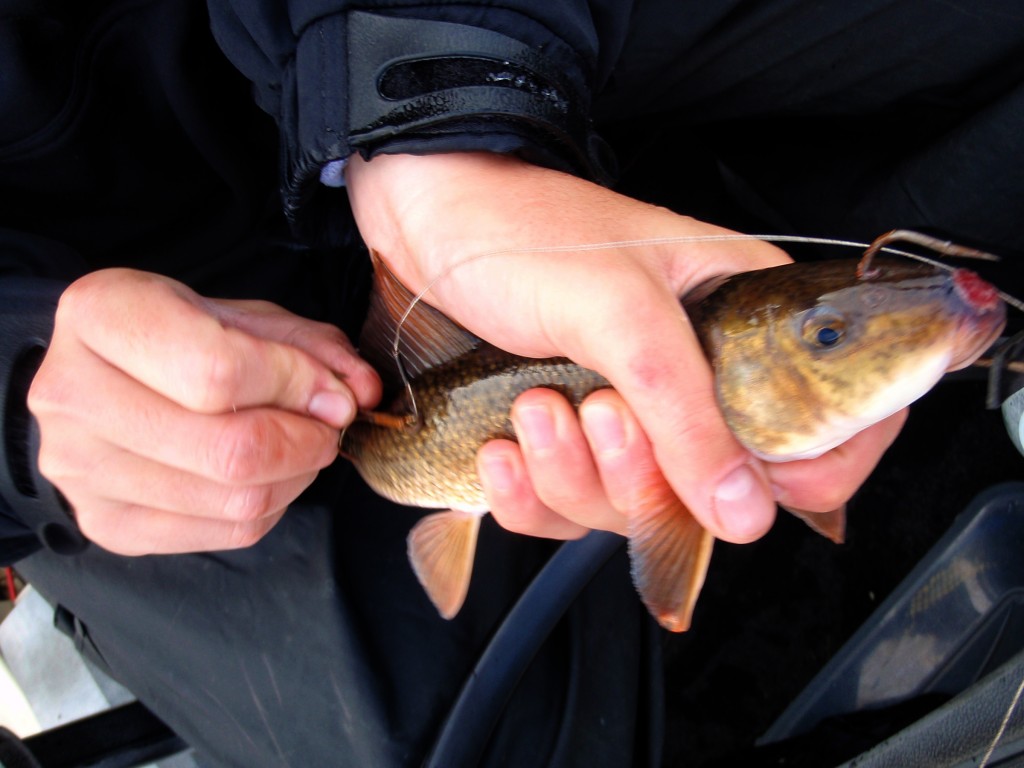
Early North American anglers baited their hooks with live creatures from the environments surrounding and within the waters they fished. Worms, insects, amphibians, crustaceans, and fish were the standards. They learned that different organisms worked better for different species at different times. They also learned that muskies preferred baits much larger than other fish did. The answer soon became clear. Suckers, and more often than not white suckers worked best for muskies most of the time. Suckers were trolled, drifted, and presented still in live form, but were also sewn and tied to hook rigs so that they wouldn’t fall off as easily when trolled at faster speeds.
Muskies are notoriously difficult to hook on modern tackle, and getting hooks into one with whatever was available and on hand back in the day was even more of a task. Therefore, muskies were allowed to swallow the sucker, as getting a hook into their soft stomach was much easier than their hard mouth. Without reels to play out line as the musky ran while swallowing the bait, the large floating bamboo poles were simply thrown into the water and followed until it was determined the bait was swallowed. At that point the pole was retrieved, the hook set, and the fish played and hopefully landed. Most of the time this worked, but I imagine the pole was sometimes never retrieved if the musky headed for deep water or heavy cover.
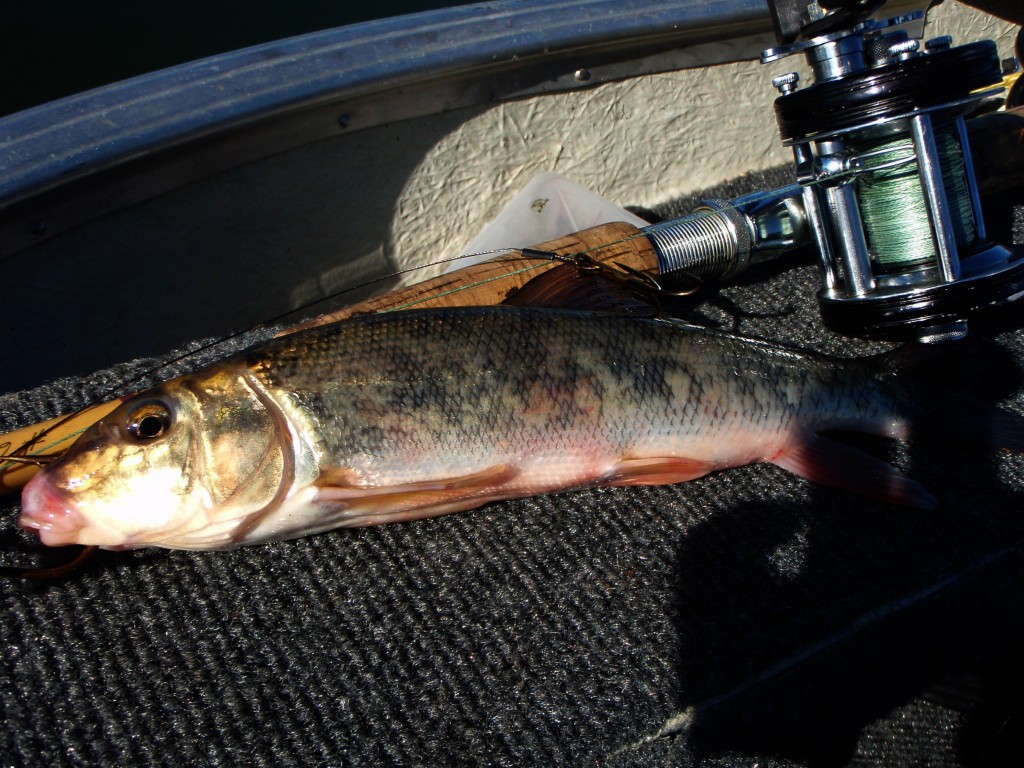
Over the years, the tackle improved and so did anglers attitudes about catch and release, or at least selective harvest. Cheaper more available reels allowed anglers to let a musky run without throwing the rod in the water, although the archaic tactic was still common with traditionalists well into the 1980’s and possibly beyond. In the 1980’s, the first quick strike rigs were developed and tested, allowing the hooks to be set while the bait was still in the musky’s mouth. Many of these rigs left much to be desired, but they did allow for a good chance at a successful live release, and as such are parents of modern live bait musky fishing.
Musky quick strike rigs for use with large suckers have developed into well thought out and heavily tested fishing systems, that when used properly have very high percentages of effectively hooking and safely releasing muskies. There are many good styles, and successful well seasoned individuals often add their own effective modifications.
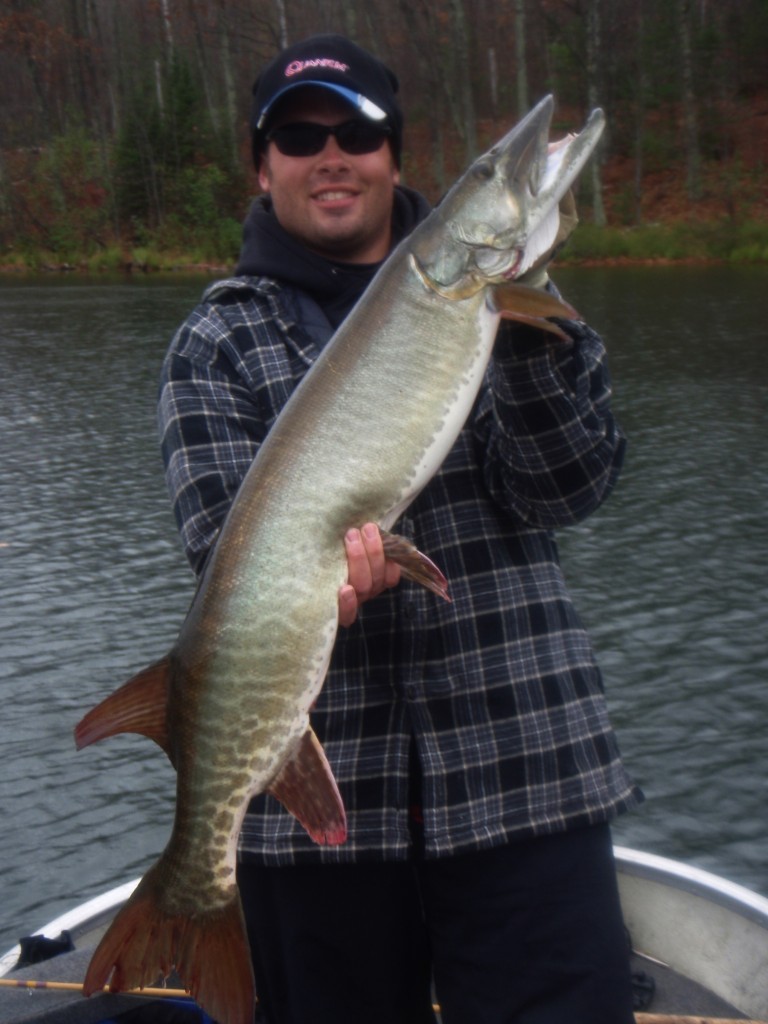
New Regulations in Minnesota
Minnesota was the first state to regulate the use of large live suckers for bait, both in how the fish may be obtained and what type of rigs they may be used on. Suckers over 12” in length may only be legally obtained by anglers from a licensed aquaculture facility (bait shop), and the angler must keep the receipt on his person to verify the legitimate purchase. Even those who commercially harvest white suckers to sell as bait, may not take those over 12” from the wild. Smaller suckers are raised in private ponds until they reach a desirable size (14-20”) and are reharvested and brought to market. These restrictions are designed to protect wild breeding populations of white suckers and ensure new healthy year classes every spring. To prevent the spread of invasive species and diseases, anglers may only transport suckers over 12” to and from fishing waters in a container not within their boat that is filled with treated tap water or well water.
In 2012, Minnesota imposed regulations that strictly defined the tackle configurations that can be legally used when fishing for muskies with live suckers. I thought the regulation needed to be defined better. I also knew that many anglers were unaware of the regulation, and that fewer were aware of what it actually meant. For these reasons, I contacted the Minnesota Department of Natural Resources, and eventually had email correspondence with Capt. James Dunn, the NW Region ENF Manager with the MN-DNR Enforcement Division regarding these new regulations. I asked Capt. Dunn several questions, to which he provided answers. The following is said correspondence:
Question:
Could you please confirm that a legal quick strike rig for use in live bait fishing for muskies shall measure no more than 9″ from front to rear hook, a length which is measured as the rig is spread to its maximum distance on a flat surface and not as it lies in use on the baitfish.
Answer:
Here is the precise rule language: 6262.0100 Subp. 6. Angling tackle.
A. An angler may have up to three single or multiple hooks on a line used as a single tackle configuration attached to the end of a fishing line. The total configuration from the first hook to the last hook must be nine inches or less. Live, artificial, preserved, or dead bait is allowed. This configuration is not considered an artificial bait or fly.
B. An angler may have one additional single or multiple hook on a line as part of an artificial bait as long as it is within three inches of the artificial bait.
C. Except for a single artificial bait or three artificial flies, an angling rig with more than one hook is not allowed on designated trout streams and lakes.
To be considered a single tackle configuration the hooks are on a line attached to the end of a fishing line. If the hooks are not arranged so as to be on the same line the terminal tackle would not meet the definition of a single tackle configuration. Hooks on separate “droppers” would not meet the definition of a single tackle configuration.
Question:
Are the use of “droppers” on a quick strike rig illegal?
Answer:
In evaluation of what is legal terminal tackle it is important to utilize the description as provided in rule for legal angling tackle. To be considered a single tackle configuration the hooks are on a line attached to the end of a fishing line. If the hooks are not arranged so as to be on a line the terminal tackle would not meet the definition of a single tackle configuration. Hooks on separate “droppers” would not meet the definition of a single tackle configuration.
Question:
Could those using “droppers” be fined for such a violation?
Answer:
The use of unlawful angling tackle could result in a summons, which could result in a fine and court costs.
That concludes the section containing information obtained from Capt. Dunn. I combined that information with what is available in the regulation booklet to conclude that in Minnesota legal quick strike rigs have to be contained on a single leader with all hooks attached in line, and that the rig may not exceed 3 hooks that may be spaced no more than 9” apart. Unfortunately, most rigs available to consumers in Minnesota do not meet these criteria. Even more unfortunate is that the rigs that are the safest to use for muskies (the ones that use “droppers”) do not meet these criteria either. I have no idea yet why the Minnesota DNR has made the use of the best (safest) rigs illegal, but I am in the process of finding out.
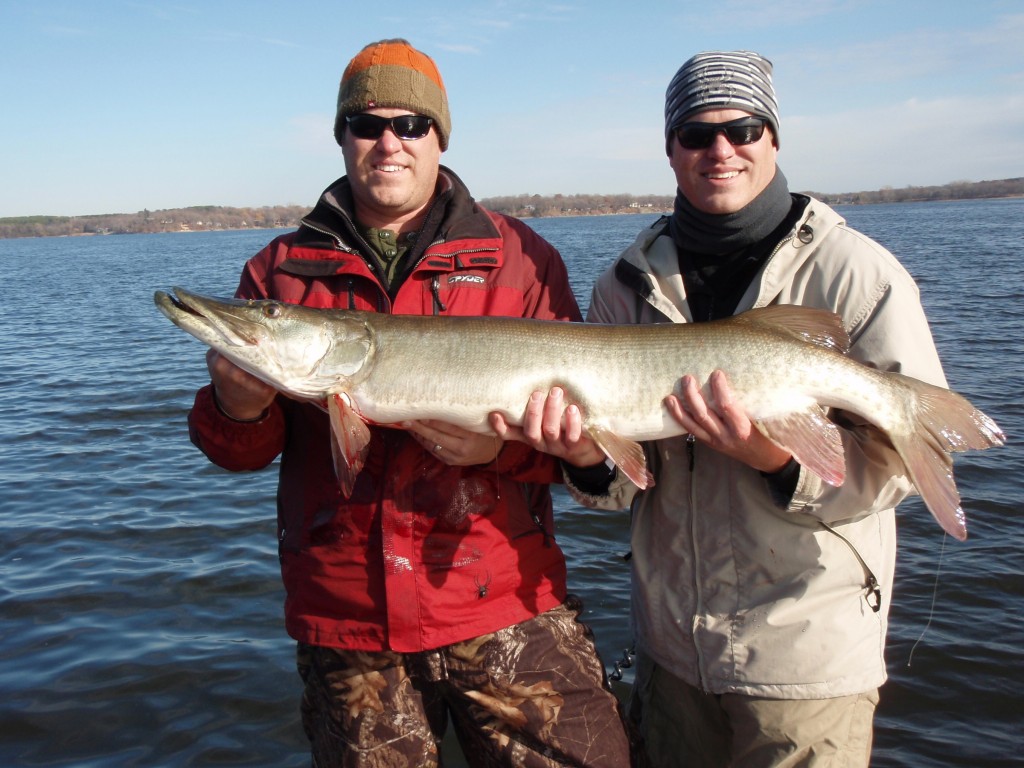
I am unsure if quick strike rigs were ever legal in Minnesota prior to this new regulation. Preliminary investigation indicates they may not have been. For years, in an attempt to create legal (and safe) rigs, anglers doctored quick strike rigs with blades and/or beads making them a “lure tipped with a sucker.” Though I am now learning that this was probably not legitimate either. Previously, it was required that live bait be only fished on a single hook, which would most likely mean that until this year musky suckers could only be fished legally on a single hook, a practice that is very dangerous for the survival of released muskies, and therefore has been frowned upon for years by those who know how to safely use live bait for muskies.
New Regulations in Wisconsin
The new regulations in Wisconsin for 2012 state that a quick strike rig or non-offset circle hook is required if using a minnow 8” or longer for bait. Also, when using a quick-strike rig and a minnow 8” or longer for bait, you must immediately attempt to set the hook upon indication of a bite. There are no restrictions on what constitutes a quick strike rig. Safe quick strike rigs have always been legal in Wisconsin and in fact were mostly developed by anglers on its statewide waters.
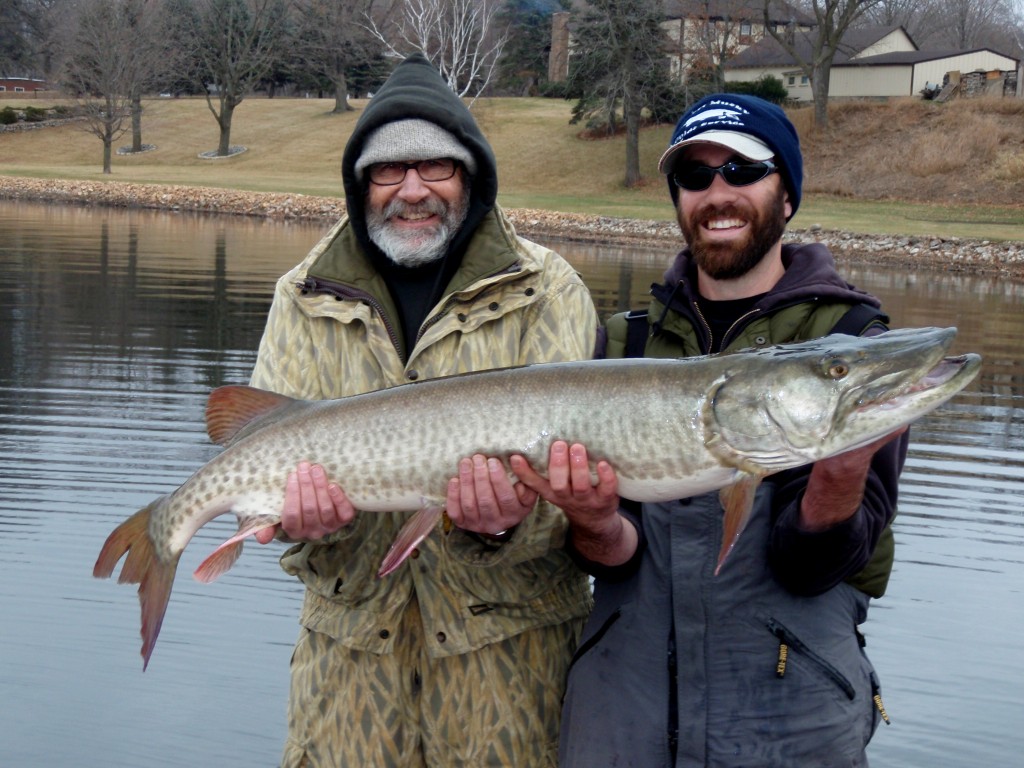
The use of live suckers is an amazingly effective tactic for catching numbers of muskies and huge muskies as well. It always has been and always will be. Legal usage issues only mean that special considerations must be adhered to. I will be conforming to them and continuing to use live bait to increase my productivity this fall and for many future fall seasons to come.
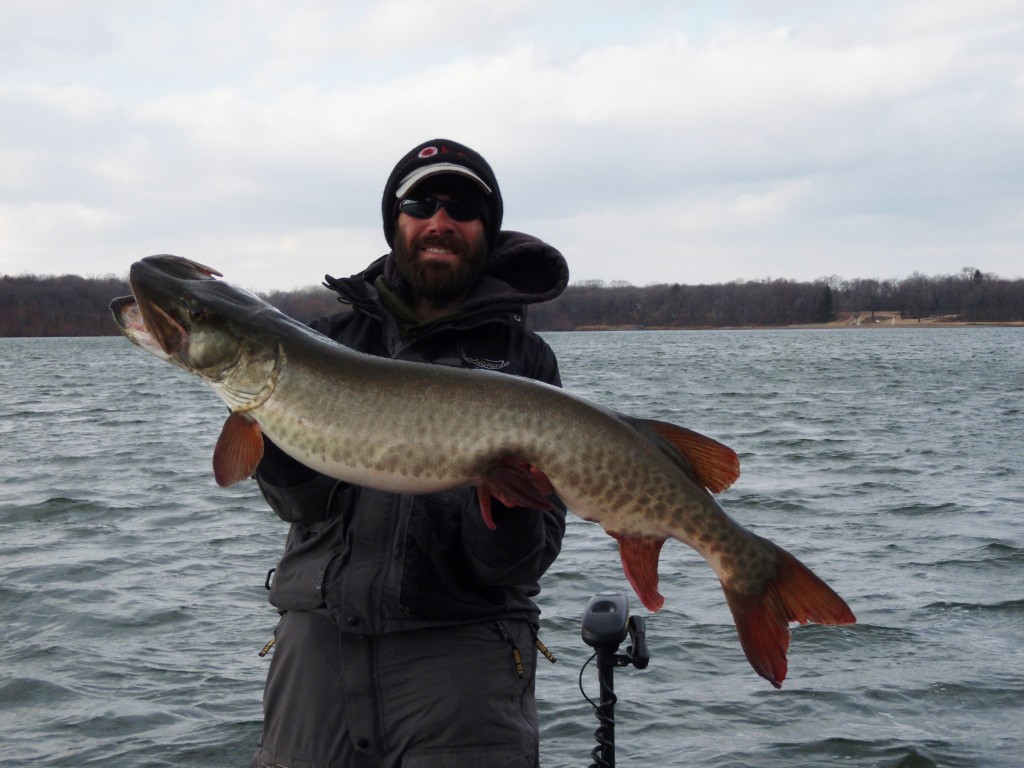
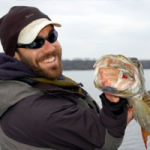 Adam M. Glickman
Adam M. Glickman
Adam Glickman, 33, originally from Ashland Wisconsin but now of the Minnesota Metro area, is field editor with Muskie Magazine, and a frequent contributor to Fishing-Headquarters and the online magazine. In 2014, Glickman began producing his new fishing program: Honest Musky Television is a unique, educational and entertaining fishing show. Our techniques are diverse, versatile, and often cost effective. We always get the strike and hookset on film, and in true honest musky fashion we use no fake hook sets or editing tricks. Glickman and his team films on a vast variety of aquatic environments from the smallest streams to the largest lakes, and done exclusively on public water, mostly in the Upper Midwest at affordable and realistic destinations.


